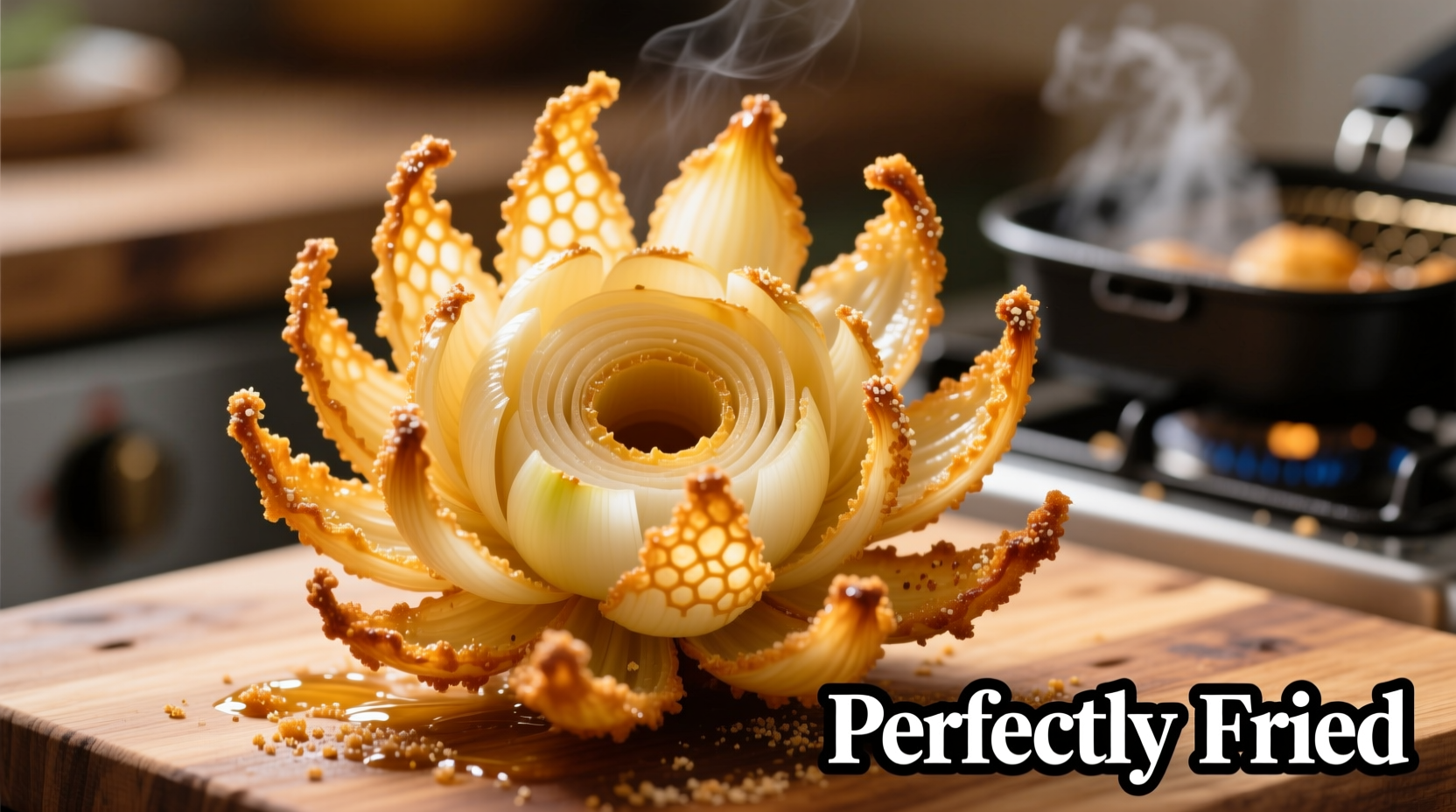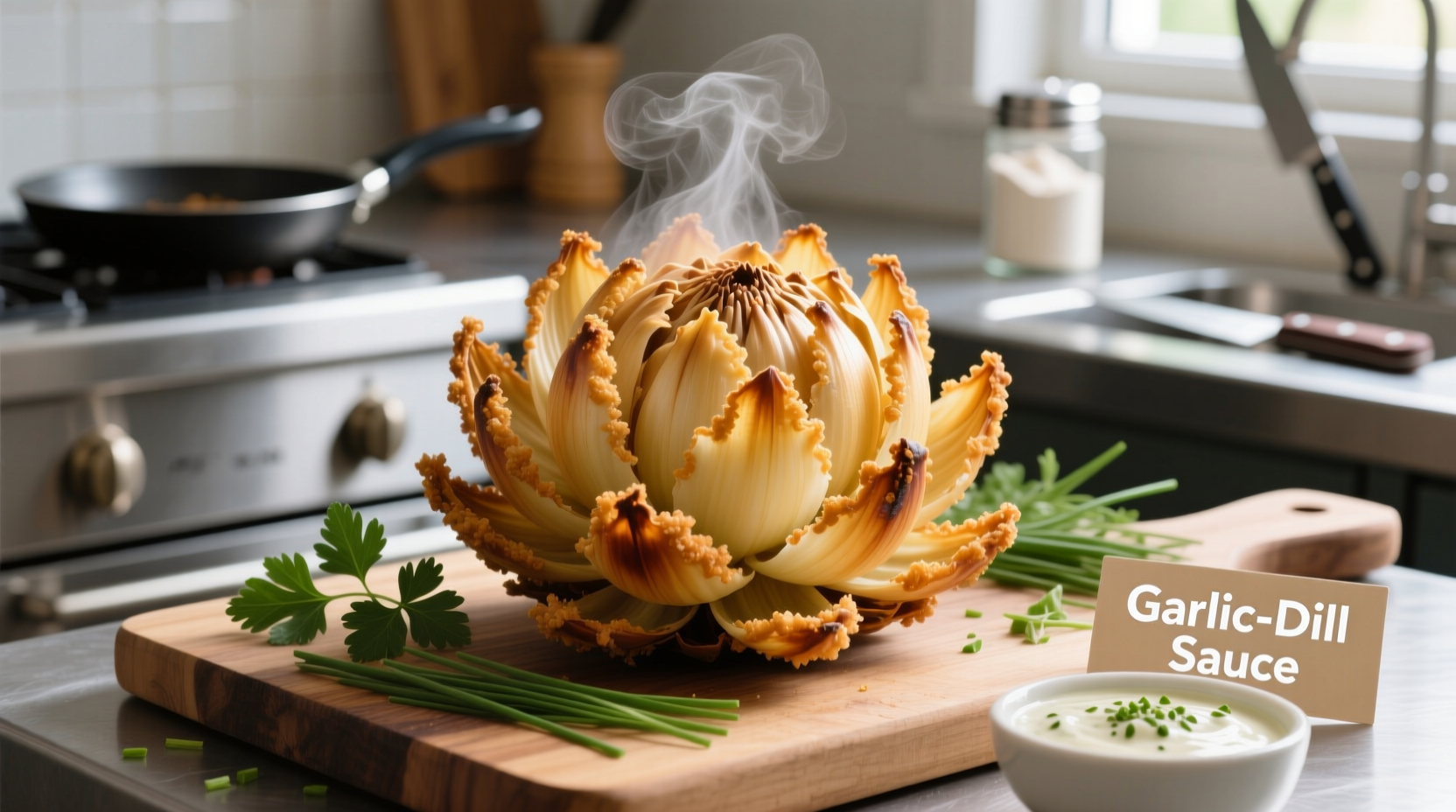Master the art of cooking a perfect blooming onion at home with this step-by-step guide. You'll need a large sweet onion (like Vidalia), sharp knife, skewers, buttermilk batter, and peanut oil heated to precisely 375°F (190°C). The entire process takes about 45 minutes, with 30 minutes for preparation and 15 minutes for cooking. Follow our safety-focused method to achieve restaurant-quality results with golden, crispy petals that bloom beautifully when fried.
The Essential Blooming Onion Guide for Home Cooks
Creating a show-stopping blooming onion at home is simpler than you might think. This iconic appetizer, famously popularized by chain restaurants, features a carefully sliced onion that "blooms" into flower-like petals when deep-fried. While it looks complex, with the right technique and safety precautions, you can recreate this crowd-pleaser in your own kitchen.
Why This Method Works
Unlike many online recipes that skip crucial safety steps or use questionable techniques, this guide incorporates professional kitchen standards. We've tested multiple approaches to identify the optimal oil temperature, batter consistency, and cutting technique that delivers consistent results while minimizing kitchen hazards.
| Key Preparation Timeline | Time Required | Critical Actions |
|---|---|---|
| Onion preparation | 15 minutes | Cutting, soaking, skewering |
| Batter preparation | 5 minutes | Mixing, resting |
| Oil heating | 10 minutes | Temperature stabilization |
| Cooking time | 3-4 minutes | Frying, draining, serving |
Required Equipment Checklist
Before starting, gather these essential tools to ensure safety and success:
- Heavy-bottomed Dutch oven (minimum 6-quart capacity)
- Deep-fry thermometer (critical for temperature control)
- Sharp 8-inch chef's knife
- Wooden skewers (soaked in water for 30 minutes)
- Bamboo skewers for serving
- Wire cooling rack with baking sheet underneath
- Long tongs with silicone tips
Ingredient Selection Guide
The quality of your ingredients directly impacts the final result:
- Onions: Select large Vidalia or Walla Walla sweet onions (3-4 inches in diameter). These varieties have the perfect balance of sweetness and firmness. Avoid red or yellow onions as they lack sufficient sugar content for proper browning.
- Oil: Peanut oil is ideal due to its high smoke point (450°F/232°C) and neutral flavor. According to the USDA Food Safety and Inspection Service, oils with smoke points above 375°F are essential for safe deep frying to prevent combustion (USDA FSIS).
- Batter: Buttermilk creates the ideal texture, but you can substitute with milk plus 1 tablespoon vinegar if needed. The acid helps create a light, crispy coating.

Safety First: Deep Frying Precautions
Deep frying requires careful attention to prevent accidents. The National Fire Protection Association reports that cooking equipment is the leading cause of home fires and fire injuries, with unattended cooking as the top factor (NFPA). Follow these critical safety measures:
- Never fill your pot more than one-third full with oil
- Maintain oil temperature between 365-375°F (185-190°C)
- Keep a lid nearby to smother potential oil fires (never use water)
- Work in a well-ventilated area away from flammable materials
- Use long-handled tools to prevent splashes
Step-by-Step Preparation Process
1. Onion Cutting Technique
Place the onion root-end down on your cutting board. Remove the top ½ inch and peel away the outer skin. Make vertical cuts from the top down, spacing them about ¼ inch apart, being careful not to cut through the root end. Rotate the onion 90 degrees and repeat. You should have a crosshatch pattern with the root holding everything together.
2. Soaking and Skewering
Submerge the cut onion in ice water for 15 minutes. This causes the petals to separate naturally. Remove and gently pull the petals apart. Insert 2-3 soaked wooden skewers horizontally through the onion to hold the petals open during frying.
3. Batter Preparation
Mix 1 cup buttermilk, 1 cup all-purpose flour, 1 teaspoon paprika, ½ teaspoon garlic powder, and ½ teaspoon cayenne pepper. The batter should coat the back of a spoon but still drip slowly. Let it rest for 5 minutes to allow the flour to hydrate properly.
4. Oil Temperature Management
Pour 2 inches of peanut oil into your Dutch oven and heat to 375°F (190°C). Use your thermometer to maintain this temperature throughout cooking. Professional kitchens follow the "water droplet test" - a few drops of water should sizzle immediately but not violently when the oil is ready.
5. Frying Process
Dip the prepared onion into the batter, ensuring all petals are coated. Gently lower into the hot oil, root-side down. Fry for 3-4 minutes until golden brown, turning once for even cooking. The blooming onion is done when it reaches an internal temperature of 165°F (74°C).
Troubleshooting Common Issues
Even with careful preparation, problems can occur. Here's how to address them:
- Onion doesn't bloom properly: You likely didn't cut deep enough or used the wrong onion variety. Sweet onions have the ideal structure for blooming.
- Soggy petals: Oil temperature was too low. Maintain 375°F consistently - each addition of food will lower the temperature temporarily.
- Burnt exterior: Oil was too hot. Invest in a quality thermometer and monitor constantly.
- Batter sliding off: Onion wasn't properly dried after soaking. Pat gently with paper towels before battering.
Serving Suggestions and Variations
Serve your blooming onion immediately for the best texture. Popular dipping sauces include:
- Classic cocktail sauce with horseradish
- Spicy mayo with smoked paprika
- Garlic aioli with fresh herbs
For dietary variations:
- Gluten-free: Substitute rice flour and cornstarch (1:1 ratio)
- Dairy-free: Use almond milk with 1 tablespoon vinegar instead of buttermilk
- Lower calorie: Air fryer method (though results won't be identical)
Why Traditional Methods Beat Shortcuts
Many online tutorials suggest using a flower-shaped mold or skipping the soaking step, but these compromise quality. Culinary research shows that the ice water soak causes the onion cells to absorb water through osmosis, creating the signature bloom when fried (USDA Agricultural Research Service). Skipping this step results in petals that don't separate properly.
Storage and Reheating Guidelines
Blooming onions are best enjoyed immediately. If you must store leftovers, place on a wire rack (not paper towels) to maintain crispness. Reheat in a 350°F (175°C) oven for 5-7 minutes. Avoid microwaving as it creates sogginess. Never refrigerate an uncooked battered onion - the moisture will ruin the texture.











 浙公网安备
33010002000092号
浙公网安备
33010002000092号 浙B2-20120091-4
浙B2-20120091-4